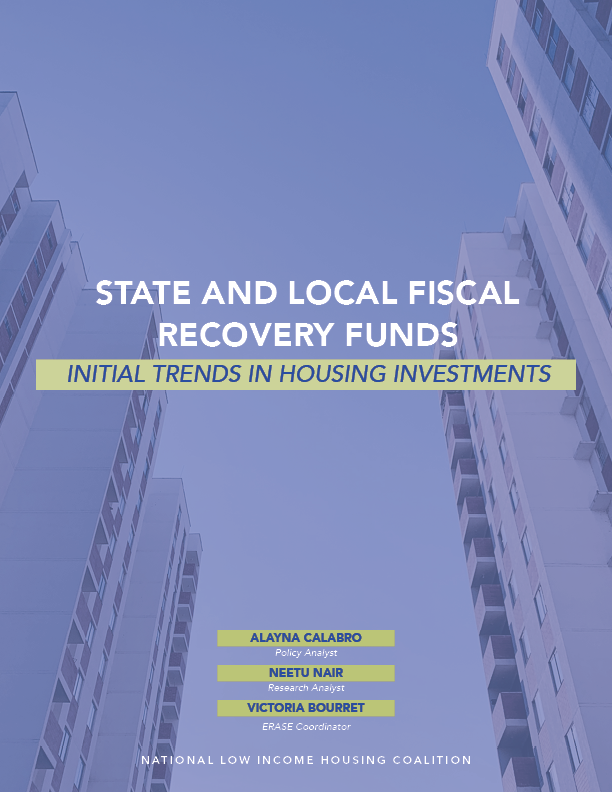NLIHC released today a new report and set of resources showing how states and localities are leveraging Coronavirus State and Local Fiscal Recovery Funds (SLFRF) to invest in affordable housing and homelessness prevention and services. The new report, State and Local Fiscal Recovery Funds: Initial Trends in Housing Investments, documents how jurisdictions are using the $350 billion SLFRF program to keep families housed during the pandemic, tackle the growing homelessness crisis, and develop affordable housing to address the root causes of housing instability and homelessness. A new webpage makes available to the public data from NLIHC’s SLFRF database and includes an interactive map identifying state and local housing investments with SLFRF, along with other resources for housing advocates and policymakers.
NLIHC is systematically tracking SLFRF investments allocated for affordable housing and homelessness prevention and services in all 50 states and the District of Columbia, Puerto Rico, and 60 localities, including the 10 cities or counties receiving the highest allotments of SLFRF and the largest city or county in every state. As of April 2022, 54 of the 112 jurisdictions (48%) in the sample had allocated more than $13.5 billion for housing activities, including over half of all states and over 41% of the selected cities and counties.
Among other findings, the report shows that:
- States and localities have allocated SLFRF toward various housing activities, with the most funds going toward affordable housing development: 35 jurisdictions have allocated over $5 billion to acquire, construct, and preserve affordable housing.
- Many states and localities have invested in short-term aid to households: 38 jurisdictions have allocated approximately $3.9 billion for services such as rental and utility assistance, legal aid, housing navigators, housing counseling, case management, and other household assistance.
- Approximately $3.2 billion has been allocated for homelessness prevention and services, with 33 jurisdictions in the sample investing in rapid rehousing, permanent supportive housing, hotel conversions, street outreach, and emergency shelters.
- Approximately $1.3 billion has been allocated for energy efficiency and weatherization, home repairs, lead paint remediation, and other community development and infrastructure programs.
The new SLFRF program webpage includes additional resources and tools to help housing advocates and policymakers better understand the types of housing investments jurisdictions are prioritizing. The page includes an interactive map and searchable table that detail the various housing programs set up or funded via SLFRF in the jurisdictions tracked, highlight total funding allocated for housing, and describe the target populations served with this historic infusion of federal funds. These tools can be used to inform advocacy efforts as elected officials make decisions on how to allocate the second tranche of SLFRF, which will be disbursed in the coming weeks.

